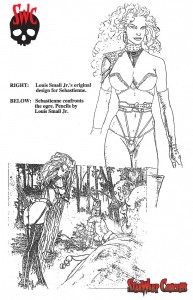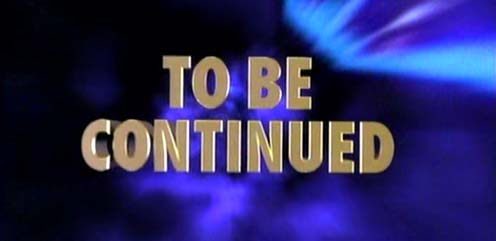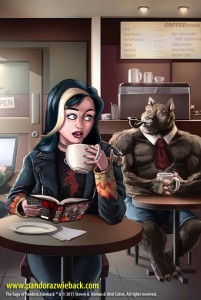Continuing a previously unprinted interview that I did for another Web site. (Part 1 ran yesterday.)
What was your big break?
As much as I hate this kind of thing, it really was a case of “it’s not what you know, it’s who you know.”
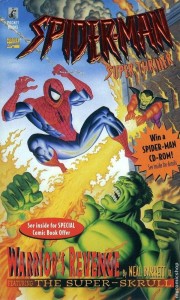 In the late nineties I was an editor for a publisher/book packager named Byron Preiss, who had a license from Marvel Comics to publish original novels based on their characters. Having edited some of the books, and written short stories for a couple of anthologies (Untold Tales of Spider-Man and The Ultimate Hulk), I was offered the chance to take over a YA novel titled Spider-Man Super Thriller: Warrior’s Revenge—Marvel had rejected the manuscript delivered by a mystery and fantasy writer named Neal Barrett Jr. Basically, I was in Byron’s office when news of the rejection came in and he turned to me and said, “So, you want to write it?” Of course I said yes!
In the late nineties I was an editor for a publisher/book packager named Byron Preiss, who had a license from Marvel Comics to publish original novels based on their characters. Having edited some of the books, and written short stories for a couple of anthologies (Untold Tales of Spider-Man and The Ultimate Hulk), I was offered the chance to take over a YA novel titled Spider-Man Super Thriller: Warrior’s Revenge—Marvel had rejected the manuscript delivered by a mystery and fantasy writer named Neal Barrett Jr. Basically, I was in Byron’s office when news of the rejection came in and he turned to me and said, “So, you want to write it?” Of course I said yes!
The only problem was, the cover for the book had already been printed for advance sales purposes, so I wound up ghostwriting the book for Neal, who was amazingly gracious about the whole thing.
So, if you ever come across a copy of Warrior’s Revenge, just remember: it might have Neal’s name on it, but it’s actually my first novel!
A couple of years later, a similar situation happened: two established writers were supposed to do an original X-Men novel trilogy, except Marvel rejected their proposal. And again Byron asked if I’d be interested in taking it over. Well, who was I to say no?
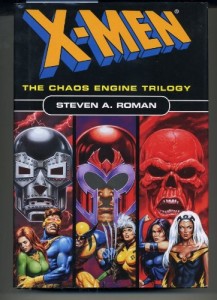 The result was X-Men: The Chaos Engine Trilogy, in which the X-Men fight their archenemy Magneto, Doctor Doom (from the Fantastic Four), and the Red Skull (from Captain America) for control of the Cosmic Cube, a device that allows them to alter reality. All three books sold really well—helped in no small part by the fact that Book 1, X-Men/Dr. Doom, came out in time for the first X-movie. I think that’s when people really started to recognize my byline.
The result was X-Men: The Chaos Engine Trilogy, in which the X-Men fight their archenemy Magneto, Doctor Doom (from the Fantastic Four), and the Red Skull (from Captain America) for control of the Cosmic Cube, a device that allows them to alter reality. All three books sold really well—helped in no small part by the fact that Book 1, X-Men/Dr. Doom, came out in time for the first X-movie. I think that’s when people really started to recognize my byline.
What authors have influenced you the most?
Well, Stephen King is probably my biggest influence. There’s comics guru Stan Lee (with whom I got to collaborate on a comics project!) and H. P. Lovecraft—an early twentieth century pulp-magazine horror writer who influenced guys like King. And there are some others who’ve influenced me: comic writer Alan Moore, mystery writer Robert B. Parker, Harlan Ellison, and Ray Bradbury. (I’m sure there’s somebody I’ve forgotten.)
The trick, though, is finding a way to blend all those influences into something that eventually becomes your own, unique writing style.
What are some of your hobbies?
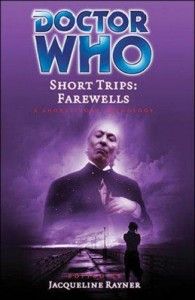 I used to be a major comic book fan, but over the years I got tired with all the superhero stuff—which is kinda funny, considering my professional writing career started with me writing short stories and novels about Spider-Man, the X-Men, and the Incredible Hulk. Now I just spend all my money on Doctor Who merchandise! I’ve been a Who fan—Whovian?—since high school. I even got to write a story for an official Doctor Who anthology!
I used to be a major comic book fan, but over the years I got tired with all the superhero stuff—which is kinda funny, considering my professional writing career started with me writing short stories and novels about Spider-Man, the X-Men, and the Incredible Hulk. Now I just spend all my money on Doctor Who merchandise! I’ve been a Who fan—Whovian?—since high school. I even got to write a story for an official Doctor Who anthology!
What’s your favorite movie?
When I was a teen it was the original, un-messed-with Star Wars. (The one where Han shot first.) Somewhere along the way it became The Blues Brothers. Must’ve been all that great blues music—well, that and the insane car stunts…
If your book, Blood Feud: The Saga of Pandora Zwieback, Book 1, was turned into a movie, who would you like to play the main characters?
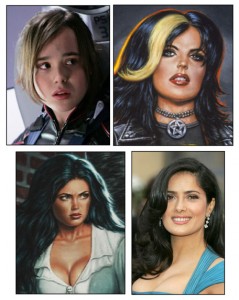 At conventions I often describe the Pandora Zwieback series to folks as “Ellen Page and Salma Hayek in a Hellboy movie.” They’re a little too old at this point to play Pan and Annie, but when I was trying to land the series with a publisher back in 2005/6, I thought they’d be perfect.
At conventions I often describe the Pandora Zwieback series to folks as “Ellen Page and Salma Hayek in a Hellboy movie.” They’re a little too old at this point to play Pan and Annie, but when I was trying to land the series with a publisher back in 2005/6, I thought they’d be perfect.
For me, Salma Hayek had been Sebastienne Mazarin since 1995, when her big-screen debut in Desperado coincided with Annie starring in the Heartstopper comic series I was writing. And when Ellen Page was running around in X-Men: The Last Stand, dressed in leather and calling Vinnie Jones’s Juggernaut character a dickhead, I thought, That’s Pan!
Oh, and Bruce Campbell for Pan’s dad!
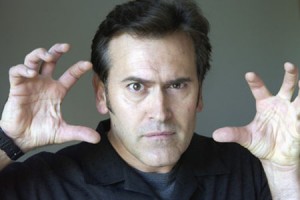
Tomorrow: Advice for writers, and suggested reading. Be here for the thrilling conclusion! 😉
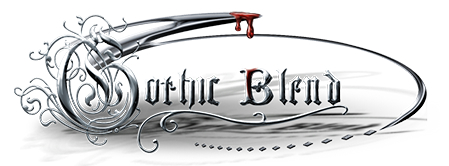

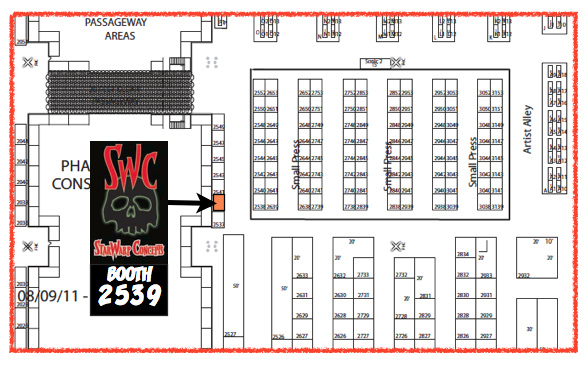
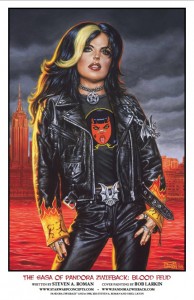 • Copies of BLOOD FEUD: THE SAGA OF PANDORA ZWIEBACK, Book 1, CARMILLA, and THE BOB LARKIN SKETCHBOOK
• Copies of BLOOD FEUD: THE SAGA OF PANDORA ZWIEBACK, Book 1, CARMILLA, and THE BOB LARKIN SKETCHBOOK • THE OFFICIAL PANDORA ZWIEBACK T-SHIRT! Now you can dress like our favorite Goth girl, and proudly show off your monster-hunting skills while wearing the same T that Pan models on the cover of Blood Feud. The shirt makes its debut at NYCC; after the con, it’ll be available exclusively through the StarWarp Concepts webstore.
• THE OFFICIAL PANDORA ZWIEBACK T-SHIRT! Now you can dress like our favorite Goth girl, and proudly show off your monster-hunting skills while wearing the same T that Pan models on the cover of Blood Feud. The shirt makes its debut at NYCC; after the con, it’ll be available exclusively through the StarWarp Concepts webstore.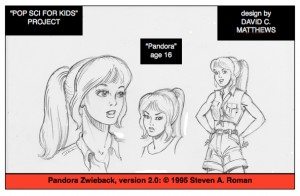 About a week later I presented Sandy with a proposal for The Braintrust: a group of highly intelligent, science-oriented teens and tweens who’d have exciting adventures in each issue of the magazine. (Hector was Pan’s maybe-boyfriend; Trent was her younger brother.) Included were drawings of the characters by David C. Matthews, a small-press artist with whom I’d been working on the original run of my Lorelei comic. As you can see, there are no traces of gothiness in fact, this version of Pan. In fact, she seems to favor Banana Republic over Hot Topic for her outfits!
About a week later I presented Sandy with a proposal for The Braintrust: a group of highly intelligent, science-oriented teens and tweens who’d have exciting adventures in each issue of the magazine. (Hector was Pan’s maybe-boyfriend; Trent was her younger brother.) Included were drawings of the characters by David C. Matthews, a small-press artist with whom I’d been working on the original run of my Lorelei comic. As you can see, there are no traces of gothiness in fact, this version of Pan. In fact, she seems to favor Banana Republic over Hot Topic for her outfits! Looking back on the project, and Pan’s role as the grumpy older sister to a smarter younger sibling, I now realize that in 1995 I created the basic idea of Disney’s animated series Phineas and Ferb, with Pan as their older sister, Candace! If only I’d thought to include musical numbers and a secret-agent platypus…
Looking back on the project, and Pan’s role as the grumpy older sister to a smarter younger sibling, I now realize that in 1995 I created the basic idea of Disney’s animated series Phineas and Ferb, with Pan as their older sister, Candace! If only I’d thought to include musical numbers and a secret-agent platypus… In the late nineties I was an editor for a publisher/book packager named Byron Preiss, who had a license from Marvel Comics to publish original novels based on their characters. Having edited some of the books, and written short stories for a couple of anthologies (Untold Tales of Spider-Man and The Ultimate Hulk), I was offered the chance to take over a YA novel titled Spider-Man Super Thriller: Warrior’s Revenge—Marvel had rejected the manuscript delivered by a mystery and fantasy writer named Neal Barrett Jr. Basically, I was in Byron’s office when news of the rejection came in and he turned to me and said, “So, you want to write it?” Of course I said yes!
In the late nineties I was an editor for a publisher/book packager named Byron Preiss, who had a license from Marvel Comics to publish original novels based on their characters. Having edited some of the books, and written short stories for a couple of anthologies (Untold Tales of Spider-Man and The Ultimate Hulk), I was offered the chance to take over a YA novel titled Spider-Man Super Thriller: Warrior’s Revenge—Marvel had rejected the manuscript delivered by a mystery and fantasy writer named Neal Barrett Jr. Basically, I was in Byron’s office when news of the rejection came in and he turned to me and said, “So, you want to write it?” Of course I said yes! The result was X-Men: The Chaos Engine Trilogy, in which the X-Men fight their archenemy Magneto, Doctor Doom (from the Fantastic Four), and the Red Skull (from Captain America) for control of the Cosmic Cube, a device that allows them to alter reality. All three books sold really well—helped in no small part by the fact that Book 1, X-Men/Dr. Doom, came out in time for the first X-movie. I think that’s when people really started to recognize my byline.
The result was X-Men: The Chaos Engine Trilogy, in which the X-Men fight their archenemy Magneto, Doctor Doom (from the Fantastic Four), and the Red Skull (from Captain America) for control of the Cosmic Cube, a device that allows them to alter reality. All three books sold really well—helped in no small part by the fact that Book 1, X-Men/Dr. Doom, came out in time for the first X-movie. I think that’s when people really started to recognize my byline. I used to be a major comic book fan, but over the years I got tired with all the superhero stuff—which is kinda funny, considering my professional writing career started with me writing short stories and novels about Spider-Man, the X-Men, and the Incredible Hulk. Now I just spend all my money on Doctor Who merchandise! I’ve been a Who fan—Whovian?—since high school. I even got to write a story for an official Doctor Who anthology!
I used to be a major comic book fan, but over the years I got tired with all the superhero stuff—which is kinda funny, considering my professional writing career started with me writing short stories and novels about Spider-Man, the X-Men, and the Incredible Hulk. Now I just spend all my money on Doctor Who merchandise! I’ve been a Who fan—Whovian?—since high school. I even got to write a story for an official Doctor Who anthology!

